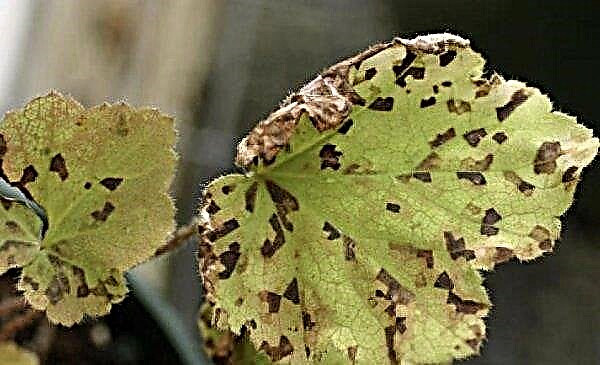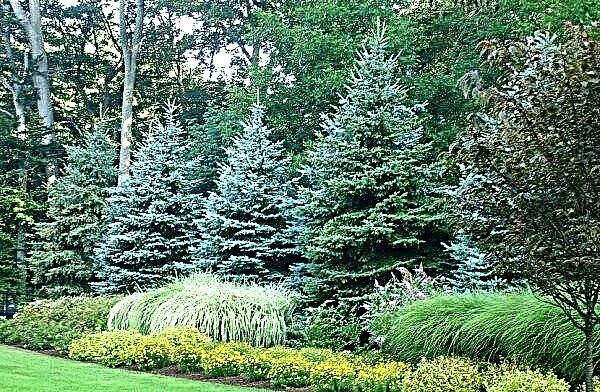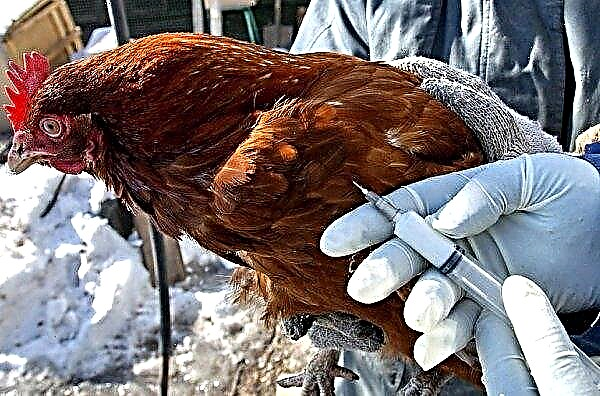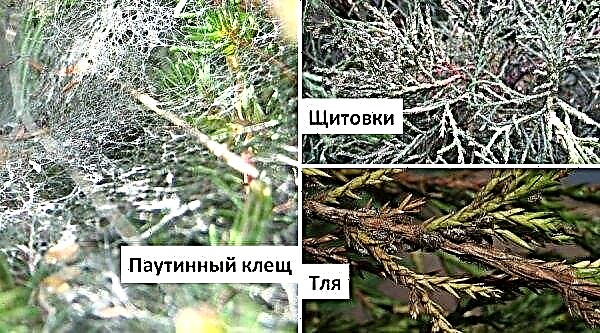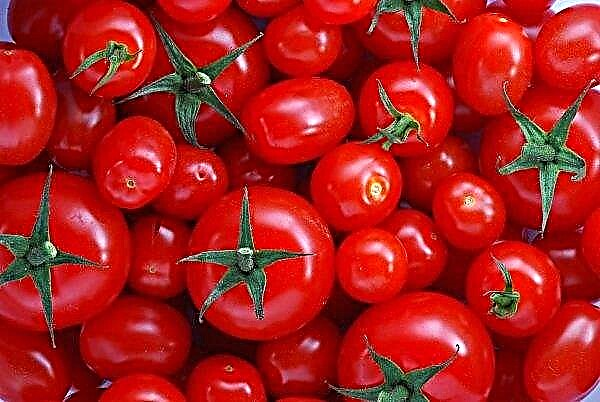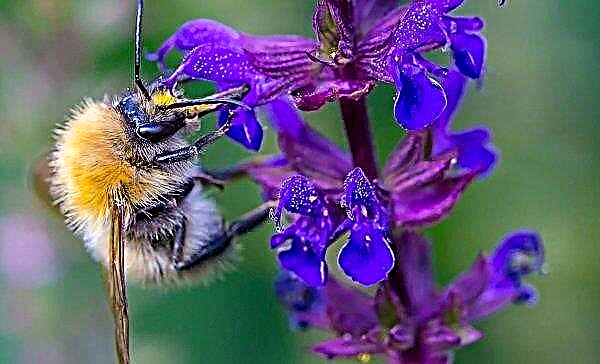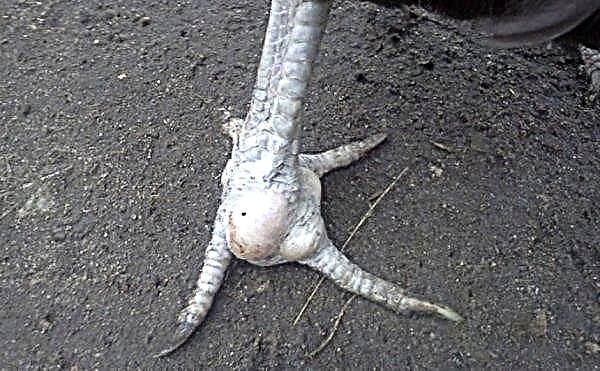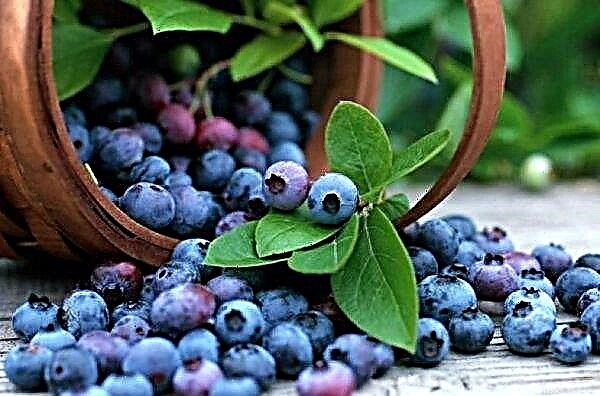Beekeepers know that in recent years, a plant such as sweet clover has spread throughout the world. You will find all information about this useful honey plant in this article.
Botanical Description
Donnik is a representative of the legume family, the moth subfamily. It is a biennial plant: this means that it begins to bloom only in the second year. It is rare to meet annual representatives of this plant. People often call it wild buckwheat, Italian or ground grass, burkun and burkunets. The main method of breeding this plant is seed propagation.
 You can recognize it by the characteristic smell of its flowers - mowed grass (coumarin smell).
You can recognize it by the characteristic smell of its flowers - mowed grass (coumarin smell).
Appearance
In height, the clover can reach 200 cm. From a direct powerful stalk, leaflets equipped with small denticles along the edges grow. Its flowers have a bright yellow color, they are small, drooping, attached to short pedicels. Often they are collected in compact long brushes, which can reach 80 cm in length. The area with nectar is located at the base of the corolla. Fruits are small beans (up to 4 cm). They ripen in August.

Spread
Initially, this plant grew only in Asia and Europe. After appeared in the UK, New Zealand and America. Now the sweet clover is spread all over the world. Places where you can most often meet him are meadows, fields, vacant lots and quarries.
Economic value and application
Donnik gained popularity due to its useful properties that allow it to be used as:
- Medicinal herb. Melilot is used both in folk and official medicine. It contains useful substances: essential oils, sugars, proteins, choline, tannins and various acids. This allows you to use it as an expectorant, antiseptic, analgesic, laxative and normalizing the work of the bladder.
- Feed agent. From this plant produce green fodder and hay for livestock. 100 kg of hay contains 51 feed units.
- Siderat. It has long been known about the property of clover to improve the soil. In the place where it grew, the soil is enriched with calcium, and acidity is also reduced, which can be useful for agriculture. He is a good predecessor for cereals. The roots of the culture release a large amount of carbon dioxide into the earth, which turns sodium carbonate into less toxic sodium bicarbonate.
- Honey plant. Melilot is widely used for the production of honey. For example, white clover allows you to collect up to 300 kg of high quality honey from 1 ha.
 25 types of clover are known. But the most popular were white and yellow.
25 types of clover are known. But the most popular were white and yellow.
White clover
White clover is a one- or two-year-old plant with small white flowers. The annual species has medicinal properties and is a first-class honey plant. This plant is unpretentious to the growing conditions, so it is easy to grow and propagate by seeds.
Important! White clover belongs to the group of poisonous plants. With improper processing, dicumarole is produced, which can cause internal bleeding.
Due to the ability to synthesize coumarin, the white look has both useful qualities and contraindications. Honey from its nectar is considered extremely valuable and one of the best. Due to the abundant flowering, which lasts 2 months, the efficiency of apiaries can increase by 7%.

Yellow clover
This is a plant with large yellow flowers. The people sometimes call it stable, clammy, trefoil, vargun, etc. Unlike the white species, it has a slightly shorter stem, less spreading inflorescences during flowering, but it has 2 times wider leaflets and begins to bloom 2 weeks earlier .
Did you know? Yellow clover will help in the fight against moths.
The chemical composition is different, but both species contain coumarin, flavonoids, triterpene saponins and essential oils with anti-inflammatory, antioxidant and neuroprotective effects.
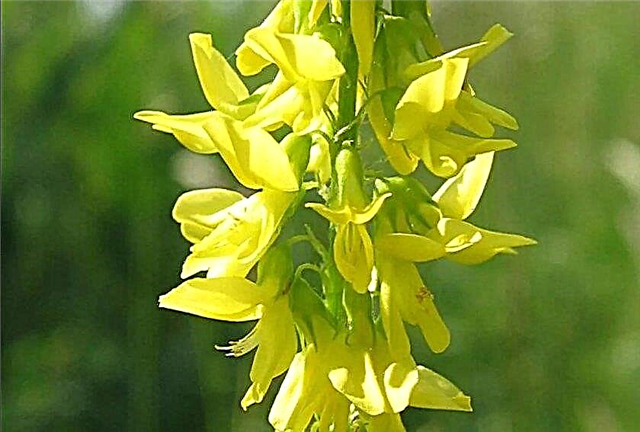 It is the yellow species that is more readily used in medicine, because it, unlike the white one, is not toxic, therefore it is considered medicinal.
It is the yellow species that is more readily used in medicine, because it, unlike the white one, is not toxic, therefore it is considered medicinal.
Honey Productivity
From 1 ha of clover fields, you can collect up to 300 kg of nectar. For productive nectar production, plants need certain conditions: hot weather without drought with periodic rainfall. Nectar productivity drops if there is insufficient rainfall.
Most of all honey is produced by annual varieties, and least of all by wild-growing representatives. The white species is valuable in that it is capable of producing nectar even in dry weather, when other varieties and crops do not produce nectar.
 It is also noteworthy that in its flowers, nectar is easily accessible to honey bees.
It is also noteworthy that in its flowers, nectar is easily accessible to honey bees.
The honey from these plants is translucent, light in color with a pleasant aroma. It is considered to be honey of excellent quality, with high taste characteristics. Before crystallization, it is almost transparent. It does not crystallize for a long time and can be left to bees for the winter. The composition of such honey is 38% glucose and 40% fructose.
The benefits of clover
The most useful in terms of medicinal properties is medicinal yellow melilot. The remaining species are also used in treatment, but much less often.
Medicines containing this plant are used to treat:
- asthma
- disorders of the stomach;
- headache;
- coughing
- colds.
Did you know? In Old Russian, the word "sweet clover" meant gout — metabolic disease. With the help of this plant, doctors treated this disease.
Drugs made from a medicinal type contribute to the production of white blood cells in the blood. In addition, preparations that relieve seizures, improve blood pressure and blood supply in general, are made from sweet clover. This plant also has the ability to heal wounds and helps with inflammation of the mucous membranes.

From yellow clover, drugs are produced that help with radiation sickness and radiation damage. Honey made from these plants also has healing properties. It helps with hypertension, insomnia, joint diseases.
Main types
The most famous plant species:
- White. The famous honey plant of the highest quality. Eurasian drought-resistant species, loves light and tolerates cold well. Toxic, can cause bleeding. The flowering period lasts only a month, and the flowers of this species themselves live no more than two days.
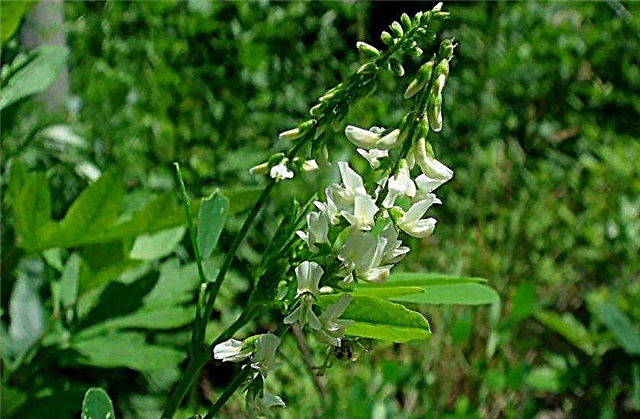
- Plowed. Annual plant. Refers to small coumarin species (1-2 points). In white, the content of coumarin is 3-5 points.
- Indian. Annual plant up to 50 cm high. Blossoms in the first half of summer. Mostly used for cooking feed.
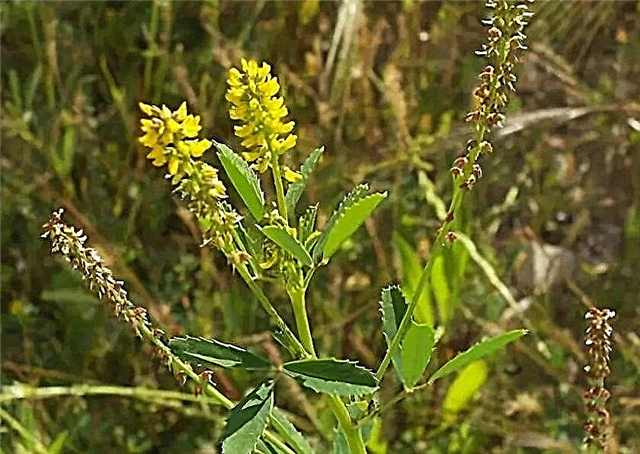
- Drug. It is actively used in medicine for the manufacture of various preparations and decoctions. Valuable honey plant. It blooms in the second half of summer.
- Toothed. Low biennial (up to 90 cm). It is considered a carabiner-free look. Grown as a honey plant.
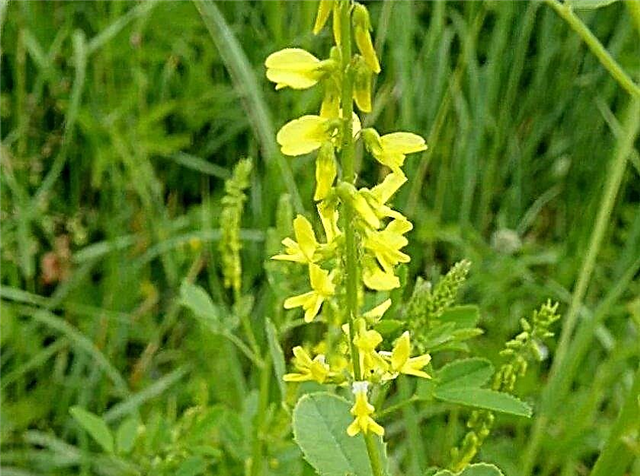
- The tallest. Perennial look. Stems can grow up to 200 cm. It grows mostly in Europe and the Western Mediterranean.
Planting
This crop propagates by sowing seeds. One of its positive qualities is its unpretentiousness to the soil. It grows well on chernozem, solonetz, slightly podzolic and carbonate soil. Does not take root in acidic and swampy soils.
Important! This plant is extremely susceptible to powdery mildew, ascochitosis, peronosporosis and root bacteriosis. Treatment is best done with fungicide solutions.
Before sowing, soil cultivation is carried out - digging with fertilizers (50 g of superphosphate and 20 g of potassium salt each). The seeds of this plant are hard stone, which means that it will be difficult for them to germinate. Experienced gardeners advise to carry out a scarification procedure before sowing - violation of the integrity of the seed coat. This can be done using special devices - scarifiers or clover.

Sowing is best started in April. Before this, they dig out grooves with a distance of 50 cm. Next, you need to sow the seeds and sprinkle the grooves with a small amount of earth. Melilotus is gaining more and more popularity in the world thanks to first-class honey and good nectar productivity. This information will be especially useful for beekeepers who choose a culture for growing in apiaries.




